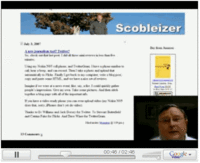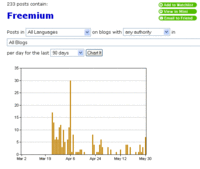Are Bloggers Journalists?
![]() Declan McCullagh has an interesting piece on the new journalist shield bill which Congress will vote on this week. McCullagh and others have argued that the legislation has been watered down in that it no longer includes personal bloggers, but only professional journalists.
Declan McCullagh has an interesting piece on the new journalist shield bill which Congress will vote on this week. McCullagh and others have argued that the legislation has been watered down in that it no longer includes personal bloggers, but only professional journalists.
The original draft of the bill included a broad definition of journalist: "a person engaged in journalism and includes a supervisor, employer, parent, subsidiary, or affiliate of such covered person."
The technical definition in the bill is now someone "who regularly gathers, prepares, collects, photographs, records, writes, edits, reports, or publishes news or information that concerns local, national, or international events or other matters of public interest for dissemination to the public for a substantial portion of the person's livelihood or for substantial financial gain and includes a supervisor, employer, parent, subsidiary, or affiliate of such covered person."
As McCullagh points out, under this new definition, a blogger who is a serious blogger and breaks news, but who doesn't get compensated (through Google Ads or otherwise) for their writing would not be covered. CNET's Don Reisinger furthers McCullagh's argument, suggesting that when he began his career, by volunteering, that he met many other credible journalists who were not being paid for their efforts.
I disagree with McCullagh and Reisinger in this case. I write this blog. I also twitter my thoughts from time to time. I also post commentary to Congoo. But I'm an industry participant, not a journalist. And, while I may have "inside information" from time to time, that's not the same as having someone share information with a journalist. I believe that it's critical for us to provide real protection for true journalists to not have to reveal a source in most instances. Yet with the many forms of online communication today, it's a slippery slope to suggest that anyone who posts any content online should have the same protections as a journalist. That loose definition could result in a backlash, where those protections are taken away from those who truly need them.

























